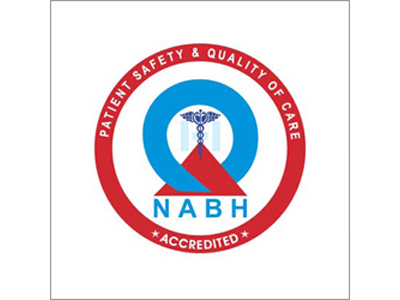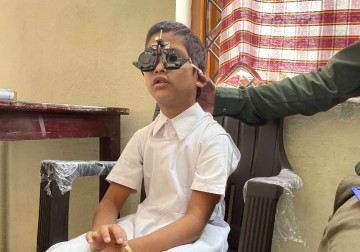Winston Prakash, Rohit Khanna, and colleagues report on the high rates of vision impairment in special schools in Andhra Pradesh and call for early screening and refractive correction to support better learning outcomes.
Vision loss is not equally distributed across the population. There are many vulnerable sub-groups (like the elderly, or tribal populations) who are grossly underserved by eye care service delivery. Children with special needs are a key vulnerable sub-group where we have little understanding of the causes and prevalence of vision loss. As a function of their cognitive impairment, they often find it hard communicating their needs to their parents or teachers. An inability to see clearly may be one of these issues that may go unnoticed and remain untreated. This can have a negative impact on their daily life, learning, and overall development.
The same disabilities also make it difficult to assess vision in this sub-group. Children with cognitive impairments, including speech, motor, and attention disabilities, need a group of experts who are trained to assess vision in these special circumstances. Children with Down’s Syndrome, for example, may struggle to identify patterns (which are used to assess vision) or verbalise their responses. These children may also find it difficult to hold their attention on the procedure for the full duration of the test, so special cues and audio-visual incentives may be necessary to keep them engaged. In essence, our understanding of the prevalence of vision loss and uncorrected refractive error in these children is limited.
A report published in the Indian Journal of Community Medicine highlights this need for refractive correction among children with special needs. To understand the extent of vision impairment (VI) and associated eye conditions in this group, a vision-screening program was conducted in six special schools in Krishna district, Andhra Pradesh. The study screened 285 children (182 boys; 63.86%) with a mean age of 11 years. About 71% had intellectual disabilities, while the rest had autism spectrum disorder, cerebral palsy, and Down’s syndrome.
Nearly 84.2% of these children had some form of VI. Cerebral visual impairment was the most common cause affecting 42.1% of the children. Among the 276 children tested for refraction, 50% had refractive errors, yet only 13 children (4.56%) were using glasses. Myopia was the most common type, seen in 44.6% of the children. The findings indicate that even easily correctable vision problems remain untreated in this group. It shows that when identified early, refractive correction can not only improve the child’s vision but can also enhance learning outcomes and quality of life in children with special needs. The authors stress the need to actively include special schools in routine school eye health programs to address disparities in access to eye care services.
'Given the increased eye health needs and additional speech and cognitive challenges in children with special needs, regular, intentional vision and refractive error screening approaches are crucial to improving their quality-of-life', notes Winston Prakash, research optometrist at LVPEI and first author of the study.
Citation
Prakash, Winston D.1,2,3; Marmamula, Srinivas1,2; Pehere, Niranjan4,5; Khanna, Rohit C.1,2,3,6,7. Status of Vision Impairment and Refractive Errors in Special Schools in Andhra Pradesh, India. Indian Journal of Community Medicine 50(4):p 711-712, Jul–Aug 2025. | DOI: 10.4103/ijcm.ijcm_14_24
Photo credit: Winston Prakash



